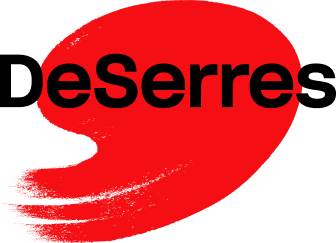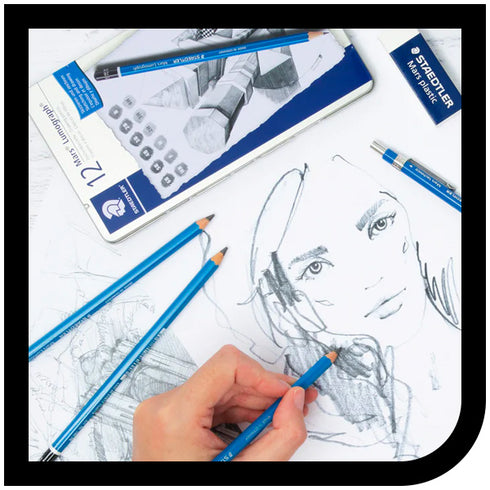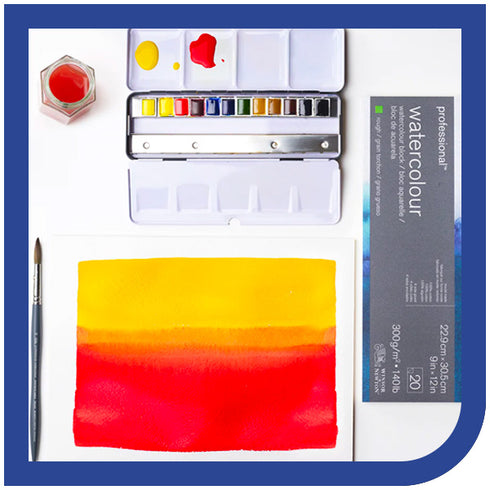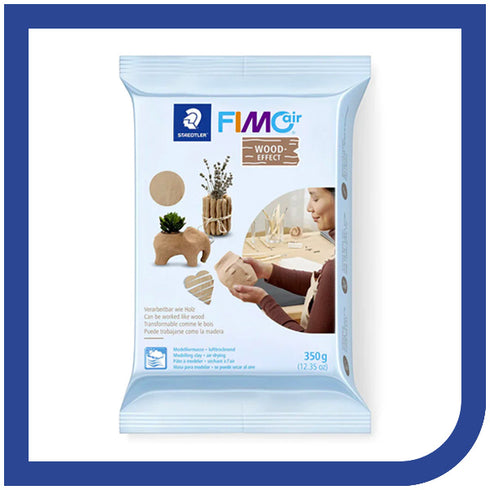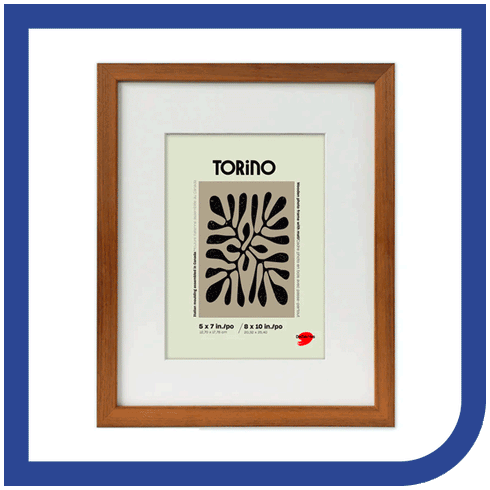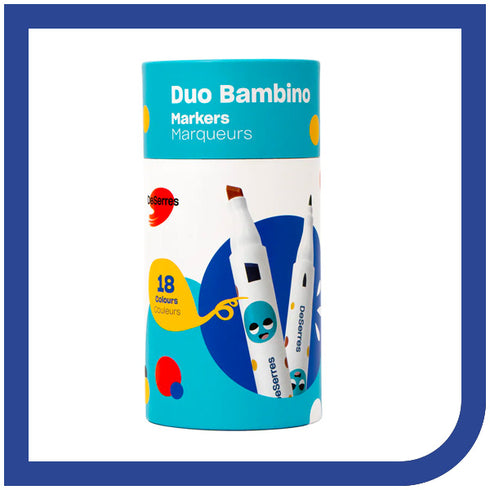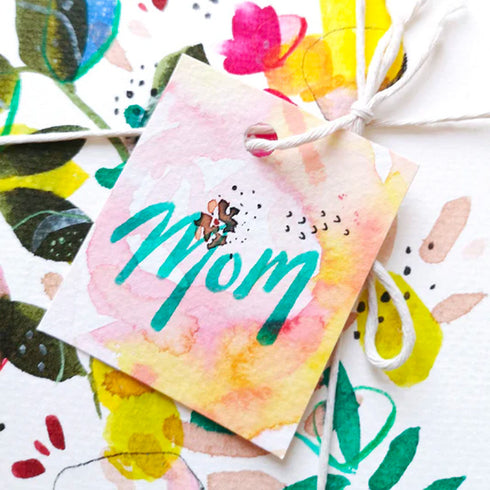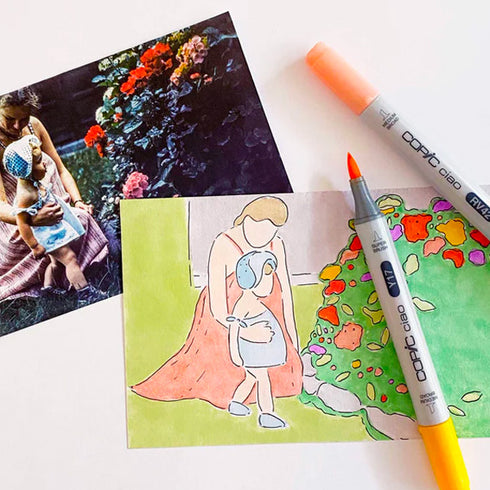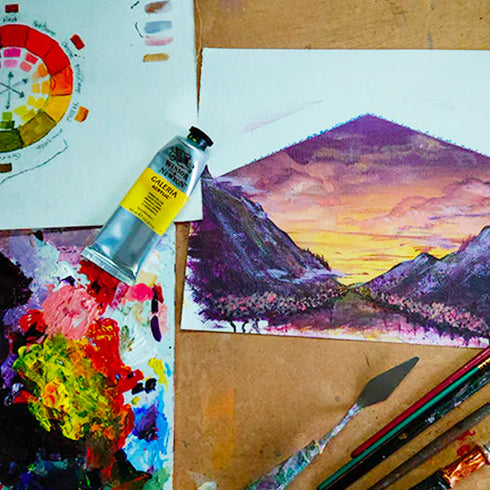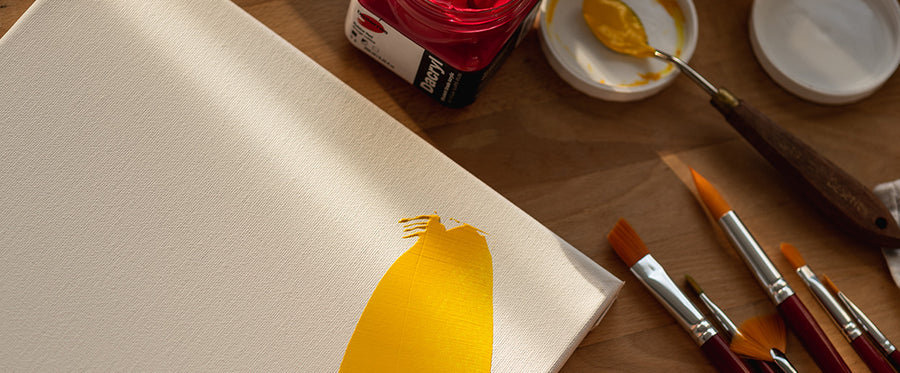Brushes are the basic tools of the trade. They help you to convey your artistic vision stroke by stroke. But not all brushes are made alike; different brushes are suited to different paints and painting techniques. You will want to select your brushes based on the sort of paint you’ll be working with, and then choose bristle tips that suit the effects you want to create.
Bristle composition
Oil brushes are sturdy, since they are generally used on coarser surfaces. They’re usually made of tough natural fibres that resist to solvents in the paints, such as red sable or hog hair. You may also find some oil brushes with specially made synthetic bristles that are designed not to break down.Acrylic brushes need to be flexible and sensitive. The chemicals in acrylic paints will eataway softer natural hair bristles, so most acrylic brushes are made with synthetics or sturdier naturals such as hog hair. Watercolour brushes must also be flexible. They need to recover their shape easily and retain colour well. They’re made of soft synthetics or soft natural hairs such as sable, and their handles are generally shorter to make it easier to work closer to the surface.
Brush shapes
Here’s a look at the most common shapes of brushes, to help you choose the best one to suit your needs.
Fine arts brushes
- Flat: A brush with squared-off bristles and a sharp chisel edge. It’s extremely versatile and every painter should have at least one. It can produce broad strokes using the flat side, and thin strokes using the chisel edge. It also works well with fluid colours.
- Round: A long, full-bristled brush with a pointed tip. Its shape retains plenty of paint and releases it smoothly on the surface; its stroke is easy to control. It’s suitable for blending and stippling techniques, and is versatile enough for a variety of decorative strokes, details and lines.
- Bright: Similar to the flat brush with shorter bristles, it is sometimes called short flat or “chisel blender. The stiffer bristles make it particularly well suited for texture effects and rough blending.
- Filbert: Similar to a flat brush, the filbert has a rounded chisel edge. It can create broad strokes or thin lines, and is perfect for the curved contoursoften required in portraiture. It also works well for applying very thick coats of paint and foliage.
- Angular or chiselled: A flat brush with bristle tips cut at an angle. It’s particularly suited to angled strokes, intricate details and painting in small corners as well as blending.
- Fan blender: Extremely versatile, the Fan is used for blending, softening edges and stippling. It’s excellent for painting patterns like grass, water, clouds and feathers.
- Liner brush or pointed rigger: A narrow, finely pointed brush with thin bristles. It’s often used foroutlines and scrollwork because it produces extra-thin lines and works well for very fine details. It’s often a preferred choice for painting petals and flowers.
- Script brush: Similar to a liner brush, a script brush produces long, fine line strokes without running out of colour.
Decorative art brushes:
Most fine art brushes can be used for decorative art as well. However, brushes made specifically for decorative art tend to have shorter handles to simplify close-up detail work. Also, manufacturers that make brushes for decorative art often add specialty tips to their lines to appeal to artists who want to easily create specific patterns or effects .
- Deerfoot: A round brush with short, stiff bristles cut at an angle. It’s ideal for stippling and texture work such as fur and foliage.
- Comb, rake or tooth brush: A round brush with short, stiff bristles cut at an angle. It’s ideal for stippling and texture work such as fur and foliage.
- Wave brush: Similar to a bright brush, its wave tip helps when painting irregular details and shading.
- Shader: A good choice for backgrounds, sharp edges, and blending. It can be loaded with two different colours on each of its sides.
- Dagger stripper: A flat brush with long bristles cut in an oval shape. It works well for long ribbon strokes, which can be produced by slowly turning the brush. Perfect for painting leaves and stems.
- Whale: The whale brush is like a flat brush with a V-shaped cut in the bristles. As a result, the pointed ends can be used separately, or the whole brush tip can be used for v-shapes or dovetail patterns.

